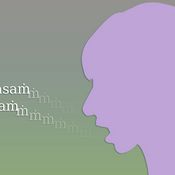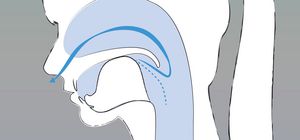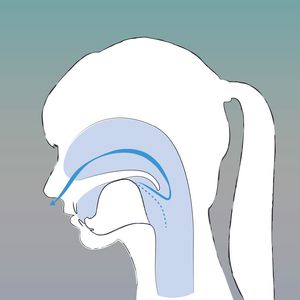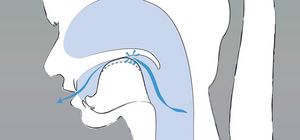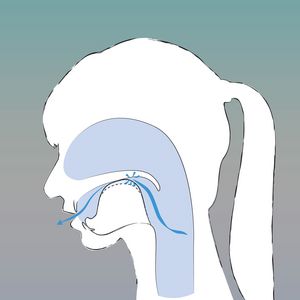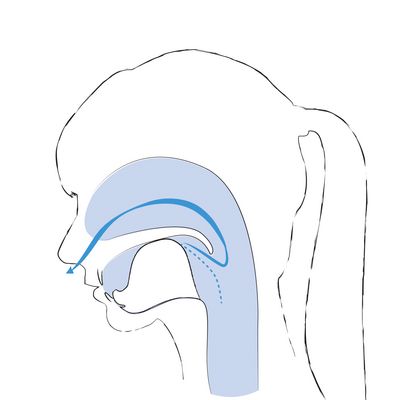
Examples:
- evaṁ pronounced as eva-m
Der Anusvāra zeigt die Nasalierung des vorangegangenen Vokals an.
Beispiel: Saṁsāra (Geburtenkreislauf) wird gesprochen als S-ã-sāra
Der Phonationsraum wird verschlossen und die Luft des Vokals entweicht durch die Nase. Je nach folgendem Buchstaben findet der Verschluss an unterschiedlicher Stelle im Phonationsraum statt. So entsteht je nach Kontext, also nach folgendem Buchstaben, ein nasaler Laut mit dem Phonationsort des folgenden Buchstaben.
Beispiel: Saṁsāra (Geburtenkreislauf) wird gesprochen als S-ãn-sāra
Da der Anusvāra sich allen fünf verschiedenen nasalen Laute in der Aussprache annähert, wird er auch als Platzhalter der nasaler Laute bezeichnet.
Anusvāra pronounced as "m" before semivowels
Before semivowels (y, r, l, v) and vowels (a, ā, i, ī, u, ū, r̥, r̥̄, l̥, l̥̄, e, ai, o, au), the Anusvāra indicates that the preceding vowel is nasalised. We can come close to the correct nasalisation when we pronounce the Anusvāra in front of these as m.
Examples:
- Saṁyoga (deep connection) pronounced as sa-m-yoga
- Saṁvit (understanding) pronounced as Sa-m-vit
Anusvāra pronounced as class nasal in front of fricatives
The Anusvāra indicates the nasalisation of the preceding vowel also in front of fricatives (ś, ṣ, s and h). We can come close to the correct nasalisation when we pronounce the Anusvāra in front of fricatives (ś, ṣ, s and h) like the corresponding class nasal (ñ, ṇ, n and ṅ):
Examples:
- Saṁśaya (doubt) pronounced as Sa-ñ-śaya
- Saṁskṛta (Sanskrit) pronounced as Sa-n-skṛta
- siṁha (lion) pronounced as si-ṅ-ha
Anusvāra pronounced as class nasal in front of plosives
In front of a plosive the Anusvāra is pronounced as homorganic (produced at the same place of articulation) nasal, i.e.:
- in front of a labial plosive like p, the bilabial nasal m is pronounced,
- in front of a dental plosive like t the dental nasal n is pronounced,
- in front of a guttural plosive like k, the guttural nasal ṅ''' is pronounced
- etc.
Please note: In Sanskrit, this is usually only the case with compound words in which the first part ends on an m. In Hindi, alternative spellings exist for many words. Since the Anusvāra is easier to write than graphically complex ligatures, this spelling is preferred in modern languages; in Sanskrit prints however, the ligatures are usually written out:
- Hindī and Hiṁd
- Mumbaī or Muṁbaī
Examples:
- paraṁ-tapa (killer of enemies) is pronounced as para-n-tapa
Anusvāra at the end of a word
According to one of the Sandhi rules, in Sanskrit, an m at the end of a word which is followed by a word starting with a consonant, turns into an Anusvara. The pronunciation does change alongside according the previous explained rules.
Merke: After applying these roles the pronunciation as m for an Anusvāra is only used in front of vowels, semivowel and labial plosives. Otherwise, as shown above, the respective class nasal is used.
Notice: Some speakers of Sanskrit pronounce the Anusvāra at any endings of a word as an "m". Others even pronounce it within all words as "m" and therefore don't use the above explained pronunciation rules at all.


